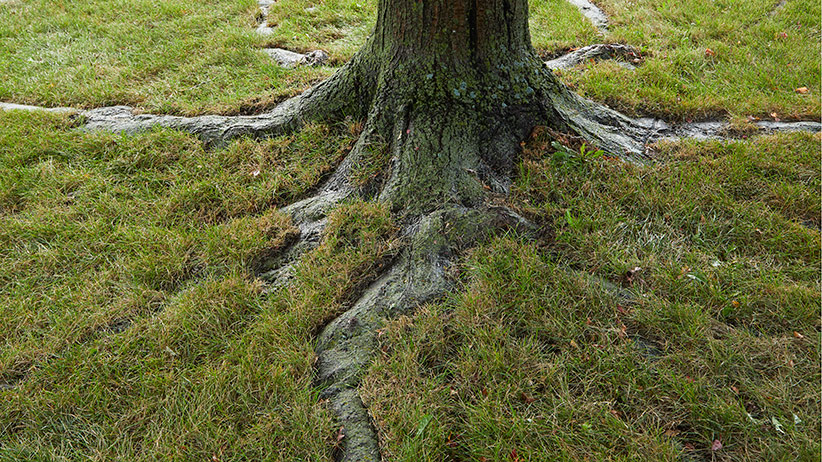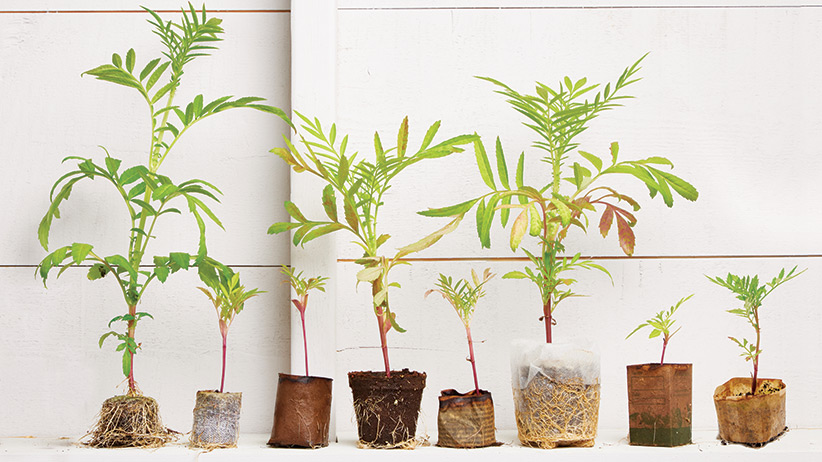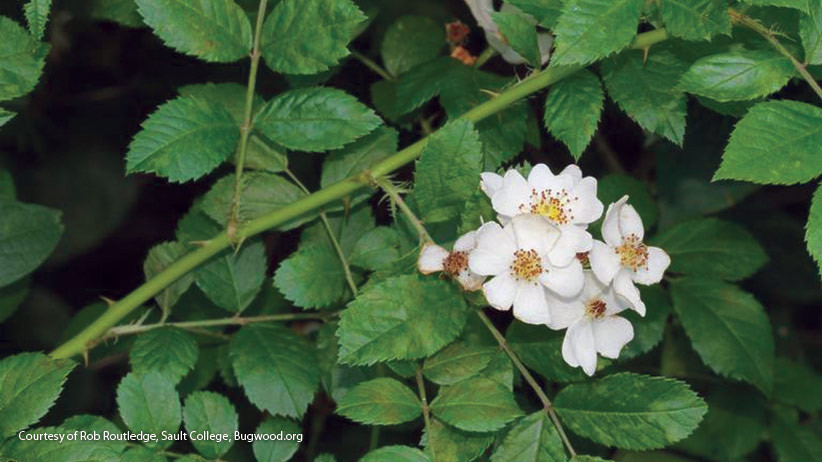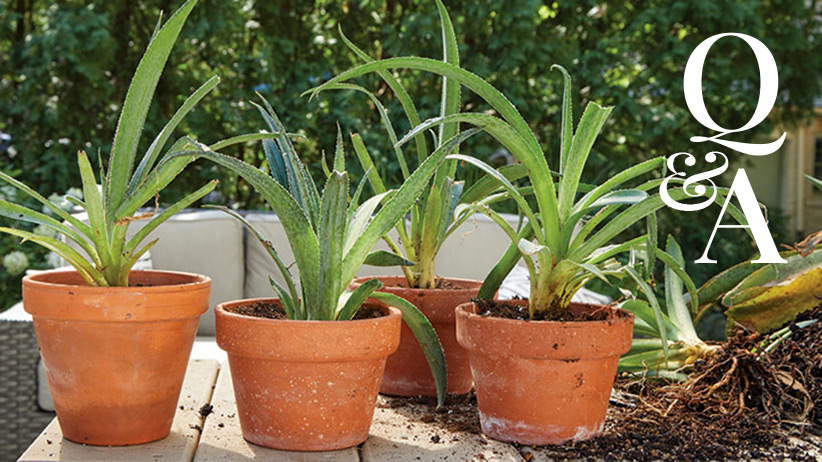How to avoid winter damage to plants
As you put your garden to rest for the winter, it’s hard to know what the weather will bring in the next few months. Will this winter be colder or warmer than average? Did you prepare your plants for the unexpected? Will every perennial come up next spring? You can’t control the weather, but you might be able to help your plants survive the worst.
6 ways winter damages plants
Here are the factors that contribute to winter damage and steps you can take that will improve your garden’s chances. With these facts, I hope that you can foil winter’s attempt to ruin your garden and emerge in spring victorious!
1. Extreme cold
Why do hardy perennials sometimes not survive a winter? Cold becomes lethal at 28 degrees F for most plant tissues. But roots can survive much lower temperatures if they have had adequate time to acclimate. As temps cool in the fall, plant roots store sugars that resist freezing solid and move some moisture out of the cells, so if they do freeze, cell walls have some give and won’t burst. Plants native to warmer temperatures don’t always have that mechanism to protect them from cold.
But even hardy plants can suffer if temperatures drop too fast before these modifications have been triggered. Here are three things you shouldn't do late in the season so your plants are prepared for winter:
NEVER do these things too late in the season:
- Prune: Late pruning encourages new growth that is often too tender to survive freezing temperatures. Instead, prune by midsummer so that new foliage can harden off.
- Plant: Fall is a great time to plant, but be sure to do it early enough that roots can grow and get established before the ground freezes. For trees, shrubs and perennials, that is four to six weeks before the first expected frost in your zone.
- Fertilize: Fertilizing can cause a plant to put on new growth that may not be hardy enough to withstand a frost. It is best to feed plants in spring and summer.
2. Temperature fluctuations
Freezing and thawing soil during temperature fluctuations in winter can heave roots up and out of the ground, where they aren’t insulated anymore and are exposed to sun or drying winds. This may happen to new transplants or plants with shallow, fibrous roots.
In addition, combine a nice warm day with bright sun, and some thin or smooth-barked trees will end up with a split in their trunks. This happens because the bark warms up and cells thaw and expand, only to contract again at sunset when temperatures drop. The outer layer of bark cools and shrinks faster than the inner layer, tightening and splitting as cells begin to freeze again. Once a frost crack occurs, it is more susceptible to insect and disease infestation.
How to protect your plants from temperature fluctuations
- Mulch: A layer of bark, straw or compost will keep soil from warming too quickly and drying out.
- Paint or wraps: Protect trunks of thin-barked trees with tree wrap or paint with white latex paint that will reflect sunlight and keep the trunk from warming up.
You Might Also Like:
Are You Using the Right Type of Mulch?
How to Save Your Container Plants Over Winter
Gardener's Problem Solver Book, Vol. 2
DIY Cold Frame Ideas
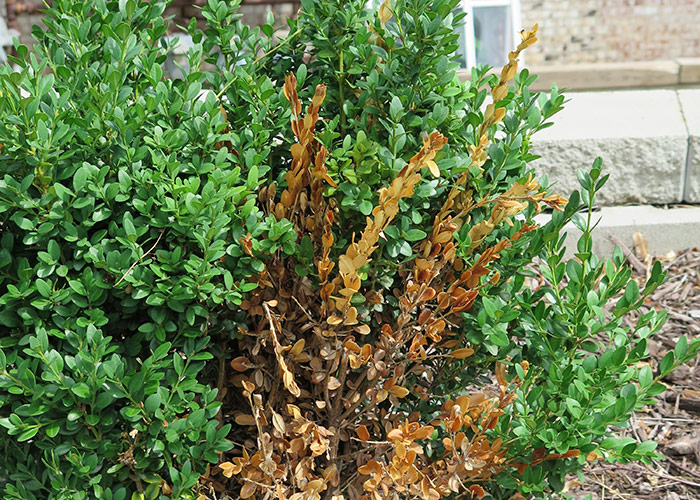
3. Wind damage
Dry winter winds cause evergreen trees, shrubs and perennials to transpire more, causing foliage to lose moisture. Roots can’t replace that moisture in winter because water is frozen in the soil and not able to be absorbed. Foliage dehydrates and the result is dried or brown needles or burned leaf edges (referred to as “winter burn”), starting at the tips of the branches, often on the side of the prevailing winds.
How to prevent winter burn:
- Screen plants: Plant susceptible evergreens out of the way of harsh winter winds and direct sun, or protect them with a temporary burlap screen, shielding foliage from drying winds or shading from the sun.
- Hydrate: Water trees and shrubs in winter if temperatures are above freezing for several days, especially newly planted specimens.
- Apply a coat of anti-transpirant: Spray foliage with an anti-transpirant, such as Wilt Stop®, that coats leaves with a light waxy layer to slow transpiration and water loss. It may need to be re-applied depending on rainfall and the length of winter.
4. Drought stress in winter
Drought stresses plants when they are growing, but if it persists into winter, it can also have effects on dormant plants that you might not see until
spring. Shallow-rooted trees and perennials, turfgrass and new transplants are more susceptible as they don’t have deep or developed roots and rely on water available closer to the soil surface. If that area is too dry (or the water is
frozen), as the plant transpires on sunny or warm days, it desiccates, causing winter burn on the foliage and possibly the death of the plant.
Prevent drought stress:
- To prevent drought stress, your best bet is to hydrate plants. Water trees and shrubs in winter if temperatures are above freezing for several days, especially newly planted specimens.
5. Winter wetness
Conversely, soil that stays excessively wet all winter can cause just as much damage. A wet fall can leave soil with too much moisture, which makes it liable to be icy or unable to dry before freezing temperatures hit. This can stifle oxygen exchange to the roots. Snow cover that melts slowly can keep soil wet and cold for too long in the spring as well. Plants that prefer dry conditions can suffer from crown rot with wet winter soils. And plants with hollow stems may be damaged if water seeps in and freezes, causing cracked stems or rot.
Prevent winter root rot:
- Put the right plant in the right place: Avoid planting in wet spots in your yard, especially if plants are not tolerant of excess moisture.
- Plant in raised beds: Berms or raised beds over wet areas will dry faster, allowing plants to stay drier.
- Remove mulch: If the winter is very wet with snow or rain, pull mulch away from the crown and base of the plant so the soil will warm and dry faster in spring.
You Might Also Like:
Plants for Wet Soil
How to Sow Seeds Outdoors in Winter
3 Ways to Make Your Winter Garden Better
6. Salt damage
Though not caused by Mother Nature, road salt damage can create all kinds of problems for plants, such as yellowing, brown or burned foliage, deformities
and delayed growth. Sodium chloride used for de-icing roads, driveways and sidewalks can end up in the garden by overspray, in plowed snow or in meltwater drainage. If the salt gets on foliage, it can cause desiccation similar to winter burn. In the soil, sodium chloride can tie up minerals that plants need and cause them to have deficiencies. Salts also absorb water, making it inaccessible to plant roots, which end up dehydrated, even though the soil is wet.
Prevent salt damage:
- Choose salt tolerant plants: Start by growing salt-tolerant species, such as feather reed grass (Calamagrostis x acutiflora), blanket flower (Gaillardia spp. and hybrids) or snowberry (Symphoricarpos albus), near roads and driveways.
- De-icer choice: If you can, use sand, sawdust or other nonsodium deicers.
- Barriers: Erect a burlap screen before winter to help deflect salt spray from vulnerable plants.
- Rinse and flush: Spray fresh water over plant foliage in early spring. If you have well-drained soil, flush salt-affected areas of the ground with fresh water in spring.
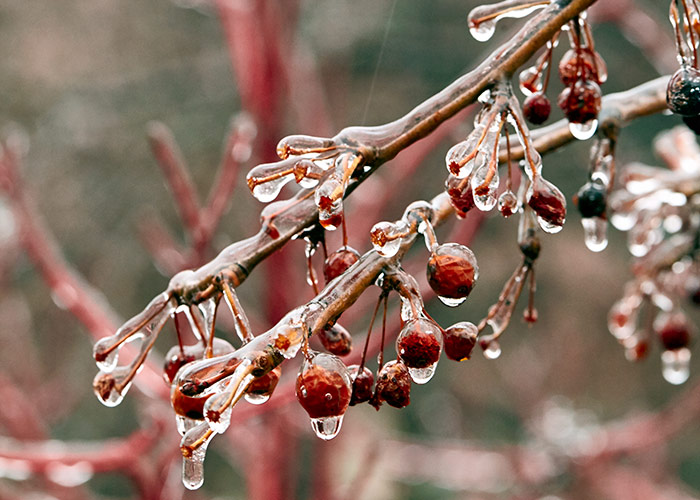
7. Snow and ice damage
While a light snow is no problem for most plants, a heavy, wet snow might bend branches dramatically. If it melts quickly, most plants will recover and straighten up within a matter of days. A thick coating of ice can cause a great deal of damage as well and may make the branches brittle enough to crack in the wind.
Prevent snow and ice problems
- Lighten the load of snow: If branches are in danger of breaking, you can gently remove the snow to help prevent this. Start near the tips and use a stick or broom to carefully lift the branches. Or use your hands to brush the snow away.
- Don't shake frozen limbs: If branches are frozen, they might crack or break if you shake them, so don't remove the snow this way. And there’s no need to remove every last flake; just reduce the weight.
- Let it melt: If you had an ice storm or snow started to melt and refroze on the branches, it’s best to leave it and let it melt on its own.










